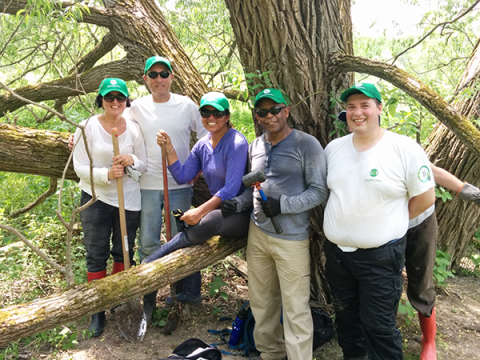
Last fall, Grand & Toy — owned by U.S. office supply retailer Office Depot, Inc. — issued its seventh annual Corporate Sustainability Report, based on its Seven Pillars of Sustainability program established in 2007. A 2014 survey of its key stakeholders — customers, suppliers and associates — ranked “the relative importance of each issue to all stakeholders. Green products and recycling were deemed the most important aspects, followed by packaging and transportation efficiency.”
The recent sustainability report highlights progress across several key areas, including recycling and green product initiatives, such as the reduction of waste and greenhouse gas emissions, as well as new programs which provide opportunities for customers to go green.
Two notable takeaways provided by Grand & Toy:
“In 2015, Grand & Toy launched a revolutionary green products classification program, assigning products a light, mid or dark green shade depending on their environmental attributes. The company created a dedicated ‘Go Green’ page to allow customers to search green products more effectively, as well as a ‘Greener Office’ page to encourage environmentally conscious purchasing practices. Sales of green products have increased to 24 percent of total sales, up 4 percent since 2014.”
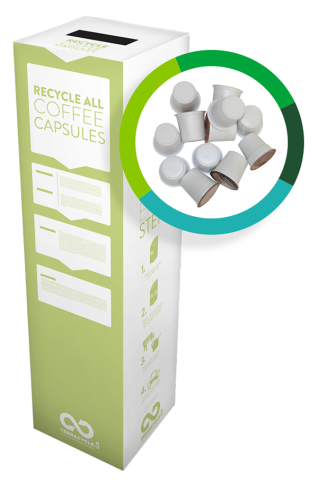
There’s also a new-ish volunteer program called Pause and Affect that grants Grand & Toy associates eight paid hours per year to participate in volunteer activities, such as tree planting and neighbourhood clean-up. From the program’s inception in May 2015 to year-end, Grand & Toy employees contributed 577 hours of volunteering across Canada, a number the company hopes to grow moving forward. Grand & Toy also stages corporate volunteer events such as packing school supplies for underprivileged children to further engage its employees.
As Grand & Toy’s sustainability manager, Serguei Tchertok is responsible both for overseeing the Corporate Sustainability Report, as well as ensuring implementation and execution of its practices across the business. He spoke with Samaritanmag about the company’s many initiatives and why being the so-called green guy makes going to work in the morning such a pleasure.
If you had to describe Grand & Toy’s sustainability efforts in an elevator pitch, how would you do it?
I’d say our top priorities are greener products, recycling our products and making sure our community involvement is high and our associates are engaged in our communities. If we can achieve those things above all else, we’re doing okay.
This is Grand & Toy’s seventh Corporate Sustainability Report. Put that in some perspective: how common are these kinds of reports in the business world.
They’re becoming more and more common with both mid- to large-size corporations.
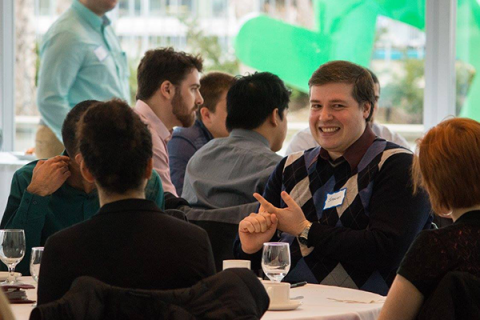
In 2015, we published a Thought Leadership Insights Report. We collaborated with Hamilton’s McMaster University and asked students how they felt about their future employers’ sustainability practices. We asked students if they’d refuse a job offer if a company’s sustainability practices were not great as new graduates and as mid-career professionals. Many of the students — some 13 percent — said that sustainability mattered so much they’d turn down a job even as new graduates. When imagining themselves as mid-career professionals, most said they would reject a job offer. It’s clear that if you want to attract and keep the best and brightest, you must ensure your environmental and social practices are on par.
Is it fair to say the office supply industry — with its high product attrition rate — is uniquely placed to lead the charge on sustainability?
Yes, and that’s why recycling is one of our top sustainability issues. We definitely need to make sure we are taking better care of our products once they go out into the world. We have take-back programs for some of our products, such as the thINK program for ink and toner cartridges. In 2014 when I started with Grand & Toy, we formed a partnership with (waste solutions company) TerraCycle Canada and we became the first retailer in Canada to offer a recycling solution for coffee capsules such as K-cups. We launched that program nationally in 2015 and we added other recycling options for so-called unrecyclable products such as personal protective equipment, office supplies and even candy wrappers.
Apart from its environmental impact and ability to attract talent, where else do you gauge the impact of these sustainability measures?
Our top sustainability issue is green products so we want to be sure our product offering is expanded. And we want to move our customers towards environmentally friendly purchasing. If we can do that, it’ll eclipse anything we do internally as a corporation because the impact of buying recyclable products — or products with other meaningful environmental attributes — is huge. In some cases, that’s very measurable, as with paper where we can present people with life-cycle analysis of how much water, trees and energy has been saved. These numbers are quite impressive and they really add up.
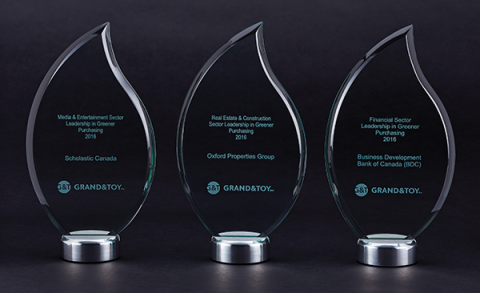
Customers vote with their wallets, but have you also had anecdotal feedback about these initiatives?
Absolutely. Some of our corporate customers demand greener options in the contracts we have with them. Some customers aren’t quite there yet, but want to go greener and for those, I host lunch and learns. In 2015 we introduced the Greener Office program, which is a page on our website that explains how customers can go greener and explains our green product classification system [which assigns products a light, mid or dark green shade depending on their environmental attributes]. It also allows us to generate reporting for our customers if they want to reach a greener purchasing goal. We reward their green spend and help make it greener.
In 2016 we launched the Leadership In Greener Purchasing Awards, which recognizes different companies in various industries that are leaders in terms of their greener spend. [Winners based on 2015 purchases included Charles River Laboratories in the pharma and tech sector, McDonald's Canada in the food and beverage sector and Kal Tire in the automotive sector]. The feedback we got on it was great.
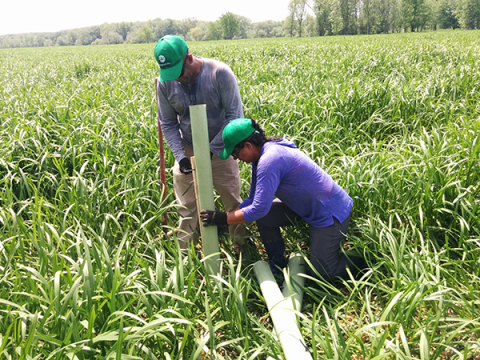
It’s been great. We’ve had some real success stories with departmental events where a whole department of 20 or 30 people would go out and do a volunteer day together. It’s a great opportunity to bring people together. Last year we formed a three-year partnership with the Nature Conservancy of Canada [billed as a leading national land conservation organization whose mission is to lead, innovate and use creativity in the conservation of Canada's natural heritage] which became the foundation of our Pause and Affect program and gave it more meaning. We are now participating in Nature Conservancy events which is amazing and goes back to our commitment to the environment.
These kinds of initiatives must make going to work each day very rewarding.
It’s very satisfying. I won’t lie – this job is great.
Sneakers